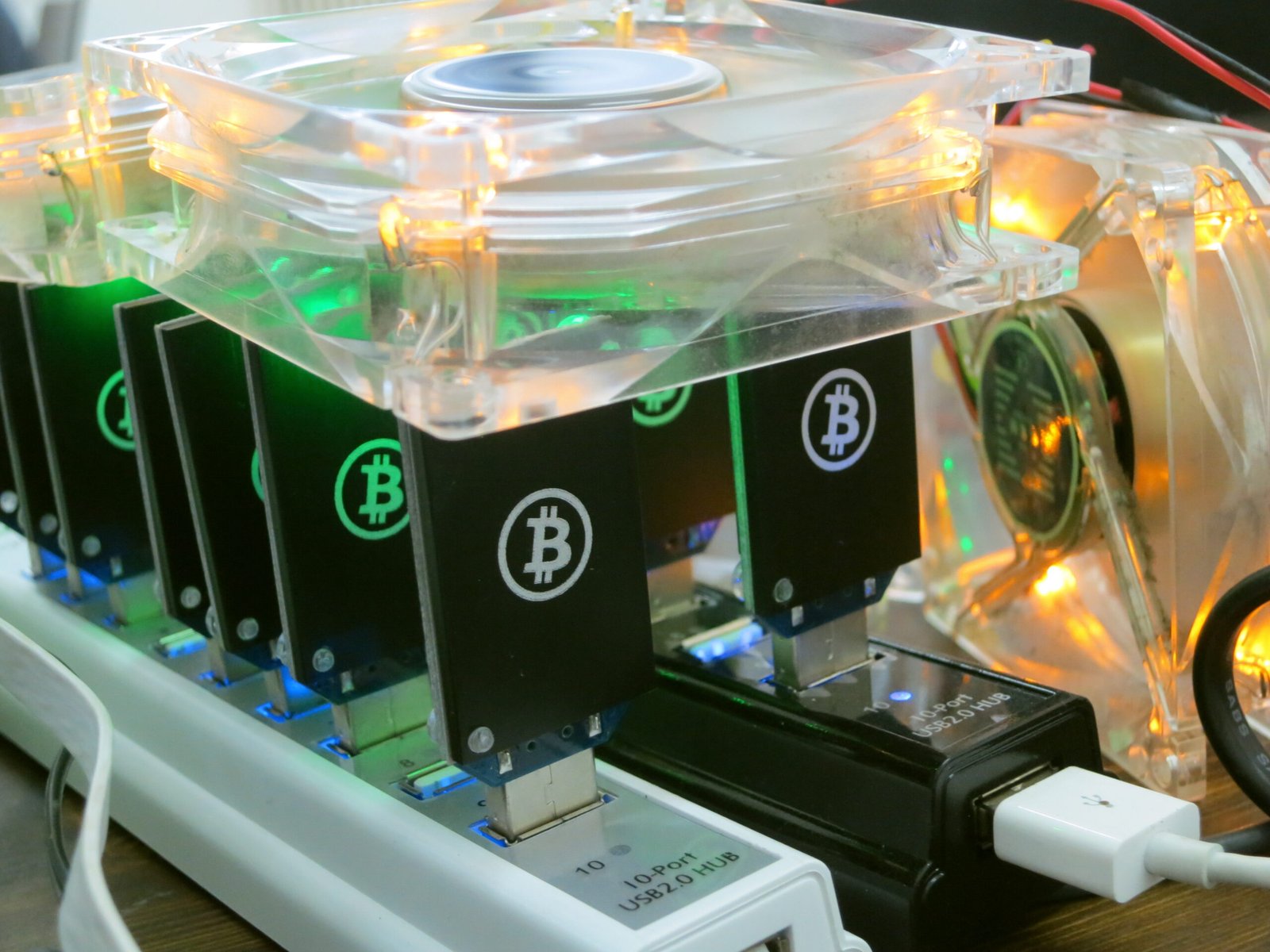ASICs, FPGAs, and GPUs: Bitcoin Mining Hardware Comparison
- 1 Bitcoin Mining Basics
- 2 ASIC (Application-Specific Integrated Circuit) Mining
- 3 FPGA (Field-Programmable Gate Array) Mining
- 4 GPU (Graphics Processing Unit) Mining
- 5 Mining Hardware Comparison
- 5.1 Performance Benchmarking:
- 5.2 Cost-Effectiveness Analysis:
- 5.3 Long-Term Viability and Sustainability:
- 6 Conclusion
- 6.1 FAQs:
- 6.1.1 What is Bitcoin mining?
- 6.1.2 What are ASICs, FPGAs, and GPUs in Bitcoin mining?
- 6.1.3 Which mining hardware is the most powerful?
- 6.1.4 Are FPGAs challenging to program for mining?
- 6.1.5 Are GPUs more cost-effective for mining compared to ASICs?
- 6.1.6 Can ASICs be used for mining cryptocurrencies other than Bitcoin?
- 6.1.7 How do regulatory considerations impact mining hardware?
In Short:
- ASICs offer unparalleled hashing power and energy efficiency but are costly and lack versatility.
- FPGAs provide customization options and better energy efficiency than GPUs, but programming them requires technical expertise.
- GPUs are versatile, widely available, and affordable, but they consume more energy and offer lower hashing power than ASICs.
Bitcoin Mining has evolved significantly since its inception. Initially, miners could effectively mine using standard CPUs. As the network grew, more computational power was required, leading to the development of specialized mining hardware. Expanding your knowledge about such investments and seeking educational resources is made more accessible by visiting the Official site of Immediate Turbo, an investment education firm. Today, miners primarily use Application-Specific Integrated Circuits (ASICs), Field-Programmable Gate Arrays (FPGAs), and Graphics Processing Units (GPUs) for Bitcoin mining. This article delves into a detailed comparison of these mining hardware options, their advantages, disadvantages, and their roles in the ever-expanding Bitcoin ecosystem.
Bitcoin Mining Basics

To appreciate the significance of mining hardware, it is essential to have a firm understanding of Bitcoin mining basics. Bitcoin mining verifies and appends transactions to the blockchain ledger. Miners engage in a competitive race to solve intricate mathematical problems using their specialized hardware. The first miner to successfully solve the puzzle earns the privilege of generating a new block and collecting mining rewards consisting of freshly created bitcoins and transaction fees. This process plays a pivotal role in the security and functionality of the Bitcoin network.
ASIC (Application-Specific Integrated Circuit) Mining
ASICs are specialized mining devices designed solely for Bitcoin mining. Their advantages include:
- High-Hashing Power: ASICs offer unparalleled hashing power, significantly outperforming other hardware options.
- Energy Efficiency: They consume less energy per hash, making them cost-effective in the long run.
- Performance: ASICs are designed specifically for Bitcoin’s SHA-256 algorithm, ensuring optimal performance.
However, ASICs have some downsides:
- Lack of Versatility: ASICs are purpose-built for Bitcoin and cannot be repurposed for other tasks.
- Cost and Availability: High demand and limited production can result in high costs and supply shortages.
Prominent ASIC manufacturers include Bitmain, MicroBT, and Canaan.
FPGA (Field-Programmable Gate Array) Mining
FPGAs are more versatile than ASICs, as they can be reprogrammed for different algorithms. Their advantages include:
- Customizability: Miners can reconfigure FPGAs for different cryptocurrencies or algorithms.
- Energy Efficiency: FPGAs consume less power compared to GPUs.
- Performance: While not as powerful as ASICs, FPGAs outperform GPUs in Bitcoin mining.
However, FPGA mining has its challenges:
- Learning Curve: Programming FPGAs requires technical expertise, making them less accessible.
- Hardware Costs: FPGAs can be expensive, and availability may be limited.
FPGA development is often community-driven, with notable FPGA manufacturers including Xilinx and independent bitstream developers.
GPU (Graphics Processing Unit) Mining
GPUs are versatile and widely available, making them popular among miners. Their advantages include:
- Versatility: GPUs can mine various cryptocurrencies and perform other tasks like gaming and rendering.
- Availability and Affordability: GPUs are widely available and more affordable than ASICs or FPGAs.
- Performance: While not as powerful as ASICs, GPUs offer a good balance of performance and versatility.
Disadvantages of GPU mining include:
- Lower Hashing Power: GPUs are less efficient than ASICs regarding hashing power.
- Higher Energy Consumption: GPUs consume more energy than ASICs, impacting long-term profitability.
GPUs use a broad range of cryptocurrencies, making them a versatile choice for miners.
Mining Hardware Comparison
To compare mining hardware effectively, consider:
Performance Benchmarking:
- Hashrate Comparison: ASICs lead in terms of raw hashing power.
- Energy Efficiency Comparison: ASICs and FPGAs are more energy-efficient than GPUs.
Cost-Effectiveness Analysis:
- Initial Investment: GPUs are the most affordable option, while ASICs require substantial upfront investments.
- Return on Investment (ROI): ROI depends on various factors, including hardware costs and electricity rates.
Long-Term Viability and Sustainability:
- Technological Advancements: ASICs may become obsolete due to rapid advancements, while GPUs and FPGAs can adapt to new algorithms.
- Regulatory Considerations: Regulations can impact the availability and legality of mining hardware.
Conclusion
In summary, selecting the appropriate mining hardware hinges on individual circumstances and goals within cryptocurrency mining. ASICs deliver exceptional performance but lack adaptability, whereas FPGAs strike a harmonious balance between customization and performance. GPUs, on the other hand, provide versatility and cost-effectiveness. As cryptocurrency evolves, miners must diligently assess their choices to ensure long-term profitability and sustainability. Staying abreast of technological advancements and regulatory shifts is crucial for making well-informed decisions in the dynamic world of Bitcoin mining.
FAQs:
What is Bitcoin mining?
Bitcoin mining verifies and adds transactions to the blockchain ledger by solving complex mathematical problems using specialized hardware.
What are ASICs, FPGAs, and GPUs in Bitcoin mining?
ASICs (Application-Specific Integrated Circuits), FPGAs (Field-Programmable Gate Arrays), and GPUs (Graphics Processing Units) are types of hardware used for Bitcoin mining, each with its advantages and disadvantages.
Which mining hardware is the most powerful?
ASICs generally offer the highest hashing power among the three types of hardware, making them ideal for high-performance mining.
Are FPGAs challenging to program for mining?
Yes, programming FPGAs for mining requires technical expertise and a learning curve, which can be challenging for beginners.
Are GPUs more cost-effective for mining compared to ASICs?
GPUs are generally more affordable upfront than ASICs, but they consume more energy and offer lower hashing power, affecting long-term profitability.
Can ASICs be used for mining cryptocurrencies other than Bitcoin?
No, ASICs are purpose-built for specific algorithms like Bitcoin’s SHA-256 and cannot be repurposed for mining other cryptocurrencies.
How do regulatory considerations impact mining hardware?
Regulatory changes can affect the availability, legality, and profitability of mining hardware, so miners need to stay informed about evolving regulations in their regions.

















